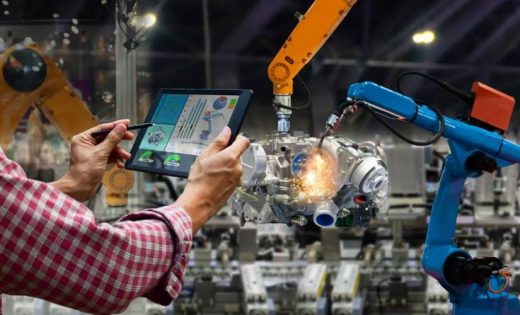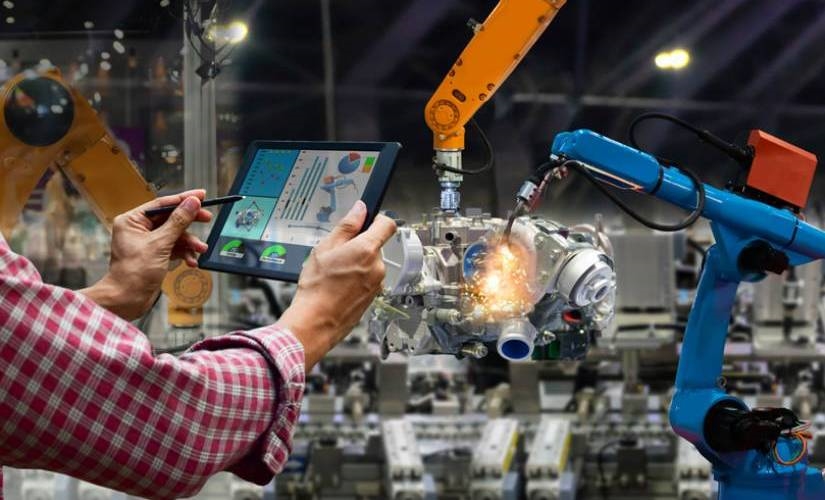These Three Industries are About to be Hit by AIoT
These Three Industries are About to be Hit by AIoT
IoT is already well established and still set to grow, with more than 41 billion IoT devices in use by 2027. What’s more, Gartner predicts that more than 80 percent of enterprise IoT projects will include an AI component by 2022. But just why is such widespread adoption on the cards?
Imagine if your IoT-powered infrastructure could run with the ability to self-repair.
Think, not only self-repair, but having the ability to apply predictive maintenance, and adjust to external variables automatically. AI promises to offer these gains due to its ability to analyze the vast amounts of real-time data gathered by IoT devices and make autonomous, intelligent decisions based on this data.
AIoT holds the potential to drive productivity and efficiency for any enterprise that employs IoT technology. AIoT is also expected to be particularly transformative for manufacturing, autonomous vehicles and robotics. Let’s explore what happens to these industries when AI fuses with IoT.
Keeping Ahead of the Manufacturing Curve with AIoT
Smart factories and warehouses were some of the earliest adopters of IoT technologies. The World Economic Forum already identified over 1000 smart factories in 2018. However, as more production plants and factories join the trend, the competitive edge they hold diminishes.
AI is pegged to deliver the next competitive advantage for organizations that already have their IoT infrastructure in place. AIoT will further enhance the capabilities of factory devices such as remote sensors, smart meters, and production machines as they can process the vast amounts of data and allow devices to react to their environment intelligently. Such changes enable products to reach the market more quickly, production lines to automatically respond to external market demand and offer new business insights from the operational data.
Take the regular IoT setup — and add in AI.
With an IoT setup, machinery can send automatic service updates to the system so that maintenance repairs can be scheduled. With the addition of AI, this process becomes fully automated. The computer systems will place orders for the parts required and the scheduling set up.
Nokia production –Finland.
Nokia’s production site in Oulu, Finland saw productivity increase by 30% and they’re now able to bring products to market 50% more quickly. A whole-digital approach combined with cutting-edge technology such as digital twins and intelligent automation made this possible.
Farming specialists prime additions.
The German digital farming specialists BASF teamed forces with Ontera inc to create an intelligent feedback system that adjusts directly in line with agricultural needs. The project uses computer vision to monitor crop and climate conditions which are fed back to the plant. If signs of pest damage or vitamin deficiency are detected, the plant will tailor the formula accordingly. The formula ensures the crops receive only the formulas they require at that point in time, reduces the production of unnecessary treatments, and helps to improve overall crop yield.
AIoT fuels the era of autonomy
Autonomy is another key deliverable promised to organizations that adopt IoT in their digital transformation strategies.
Many public and private buildings have been keen to adopt the power of IoT to improve their operational systems and allow for real-time service adjustments. Smart heating systems are one example of how this trend is taking shape.
AIoT helps to monitor variables such as weather, pollution levels, or the number of workers in specific locations and auto-adjust devices across the building. Knowing the exact occupancy numbers improves conditions for the users of the building, prevents unnecessary energy consumption, and lays the groundwork for predictive analytics.
Toronto-based Ecobee uses a range of AI-powered smart thermostats that continually readjust based on incoming real-time data from occupancy and humidity sensors, exterior temperature readings, and predictions based on prior user behavior patterns. Ecobee’s latest feature even connects the system to time-in-use energy pricing that allows the AI model to prioritize energy usage when it’s cheapest.
When talking about the future of AIoT, we touch on autonomous vehicles. McKinsey predicts that up to 15% of all cars will be autonomous by 2030. AI provides data to the control system so that vehicles respond to objects, control speed, and change direction accurately.
In the autonomous vehicles use case, pre-existing AI will fuse with new IoT infrastructures to help cars stay up to date with traffic patterns, road closures and weather conditions in real time. The more connected devices that are built into traffic and municipal infrastructures, the stronger the benefits – such as reduced traffic – are set to become a reality.
Ericsson and Veoneer partnered to develop a connected vehicle cloud to support the widespread adoption of this technology. The partnership will deliver vehicle-to-vehicle (V2V) and vehicle-to-everything (V2X) connectivity to ensure every autonomous vehicle on the road has the latest real-time data. Cloud-technology processes this data with minimal latency.
How Robotics is Enhanced with AIoT
The robotic sector as a whole saw significant growth in 2019, with investments of $ 1.1 billion in June alone. As with human intelligence, our external environment influences the decisions we make. Robots with real-time AIoT at their fingertips make smarter decisions and one step closer to realistic intelligence.
Delivery robots like those made by Starship Technologies are a familiar sight in many cities and help brands deliver consumer and commercial goods quickly and reliably. These robots already rely on the power of IoT to help them navigate and reach their destinations. Now, companies are exploring how AI could help these robots communicate with customers using natural language processing. As home delivery services continue to increase in popularity, robots are extremely likely to grow alongside this trend.
AIoT is also poised to make surgical robots even more helpful. Smart operating theatres are connected to medical devices, real-time imaging, and patient health data. Surgical robots can use this data to adjust decisions during delicate surgeries to improve patient outcomes.
The next level of productivity and precision
The power of AI is, at times, limited by the amount of readily available data for the algorithms to train, detect patterns and make predictions. As industries continue to adopt the benefits of IoT, and the number of connected devices grows, so too does the potential of AI.
AIoT takes advantage of the vast pools of data that are available in these connected environments to make smarter autonomous decisions and more accurate predictive analysis. Overall this helps organizations increase their productivity, create more efficient processes and even improve overall customer experience.
While industries more traditionally associated with hardware, such as manufacturing, autonomous vehicles, and robotics, are early adopters of this technology, any industry that incorporates IoT in their processes could benefit from the same productivity boosts that AIoT promises.
The post These Three Industries are About to be Hit by AIoT appeared first on ReadWrite.
(18)



